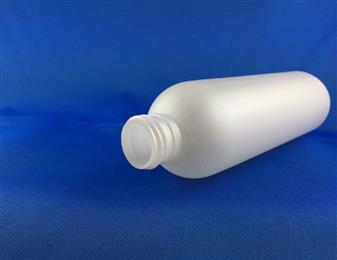 Controlled light-weighting for packaging
Controlled light-weighting for packaging
Mini-pellets achieve a more homogenous foam structure
Positive effect on carbon footprint
Packaging manufacturers and brand owners trying to reach sustainability goals and reduce costs are expressing keen interest in the newest HYDROCEROL chemical foaming agents (CFAs) from Clariant’s Masterbatches. The finer and more durable foam-cell structures make it possible to cut resin use and reduce part weight – without significant loss in mechanical properties.
HYDROCEROL chemical foaming additive masterbatches play a critical role in a Clariant initiative to help packaging producers develop more sustainable containers by enhancing recyclability, promoting reusability, increasing acceptance of compostable and bio-based polymers, and reducing overall plastics content.
Added to plastics during processing, HYDROCEROL chemical foaming agents decompose to produce bubbles in the polymer matrix when pressure is reduced as the resin enters the mold or exits the extrusion die. Because the gas displaces the polymer, it takes less plastic to make a bottle. Material-use reductions of 10% or more have been reported in mono-layer and coextruded bottles and sheet. At the same time, the CFA plasticizes the resin in the processing machine, so less heat needs to be added to melt it (energy savings); less heat has to be removed during cooling, so cycle times are also reduced, often by 10 to 15%.
HYDROCEROL masterbatches are available in the form of mini pellets. Less than half the size of standard pellets, mini pellets make it possible to achieve a more homogeneous and finer foam structure at low dosages. This allows for a more accurate dilution of the additive and hence a more constant weight per bottle.
IMPROVED FOAM TECHNOLOGY
Foaming is not new. It has been used extensively in construction components, home and garden furniture and luggage and more recently in automotive interior parts, to reduce weight and raw material use. But acceptance in packaging applications has been limited by a relatively coarse and non-uniform cell structure that affected appearance and mechanical strength, especially in thinner wall sections.The improved CFA technology used in the new HYDROCEROL masterbatches now makes it possible to achieve a highly uniform structure of cells as small as 20-100 micrometers in diameter. This compares very favorably to the 400 micrometers typical of first-generation foams and even the 200 micrometers, which was considered “fine” until recently.
This means there is no significant appearance or performance difference between structures produced with CFA versus those made without it. Yet the benefits of reduced part weight and lower production costs are undeniable.
www.clariant.com





























































































